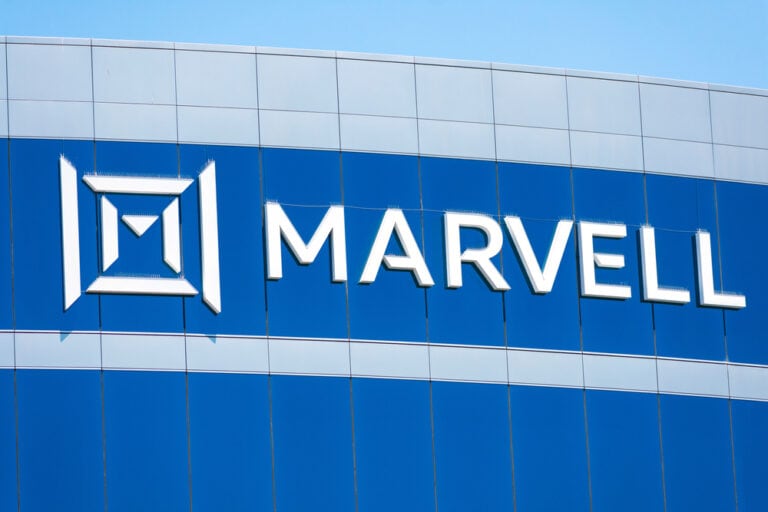How did a company born in the mid-1990s emerge as the superstar of AI hype? Many already asked that question about Nvidia, but the same now goes for Marvell Technology. Why has this chipmaker become worth twice as much in one year?
Currently, Marvell Technology’s market value sits at $98 billion, nearly twice as much as it was this time last year. The new figure even surpasses the chip superpower of old Intel, which today is worth $90 billion. The latter recently said goodbye to its CEO Pat Gelsinger. Now “Chipzilla” is said to consider Matthew Murphy, CEO of Marvell, as a replacement. One wonders if that would be a step forward for him now.
Ready for the cloud
The explanation for Marvell’s rise, to put it simply, is AI. As generative AI has breathed new life into the tech industry, demand for hardware for AI applications has exploded. Marvell Technology, which offers a variety of infrastructure products, is considered a key player in this expansion. The company offers compute chips, networking and storage, in addition to custom solutions depending on the customer. A remarkable feat is that it works with all hyperscalers.
AWS, however, is the most pivotal partner in this area. Just last week, for example, the two parties announced that they will work even more intimately together over the next five years. Marvell designs its chips through AWS’ EDA (Electronic Design Automation) tooling. Going the other way, the chipmaker supplies the cloud player with custom AI chips, DSPs, PCIe retimes, DCI modules, and Ethernet switches.
It may lead to some confusion, especially since AWS introduced its Trainium 2 chip under its own name. Still, this was a custom Marvell design; only with Trainium 3 is AWS truly claiming to have been fully at the controls itself. Nevertheless, it does use the expertise of a partner like Taiwan’s AIChip.
Marvell has collaborated with hyperscalers for years. For example, Marvell ThunderX2 server chips were deployed on Microsoft Azure in 2019, and the company contributed to Google’s canceled Project Ara in 2015. Still, collaborations with hyperscalers don’t always work: Google Cloud’s Axion processor passed Marvell by, while competitor Broadcom stepped in for the collaboration despite dissatisfaction.
Also read: Google introduces its first proprietary ARM CPU, called Axion
Bigger fish
Broadcom, by the way, is Marvell’s most clear-cut competitor. However, with its more diverse offerings and a portfolio of large legacy solutions, that company’s value is considerably higher at $838 billion. Nevertheless, Marvell has grown and expanded in many directions through multiple acquisitions. In 2021, it acquired Inphi Corporation and Innovium; the former focused on mixed-signal integrated circuits, and the latter on network switches for data centers. In short, niches are critical to Marvell’s triumph inside the modern AI infrastructure.
If you want to come up with a list of Marvell competitors, you won’t be done soon. For example, like NXP, it is in a fierce battle for control of the “Software-Defined Vehicle,” or the modern, automated car. But it also competes with AMD and Nvidia’s data center solutions beyond CPUs and GPUs. Think Data Processing Units (DPUs) are needed to supply AI chips with data as quickly as possible. Marvell’s distinction in this is that, unlike AMD, for example, it also offers telco-specific solutions. Thus, it appears that even within a segment (DPUs), there are distinctions between Marvell and the continuously different competition.
Turn needed
It is notable that Marvell’s many specializations are not in too good a shape without AI. Automotive is not a booming market, while 5G infrastructure and consumer chips are similarly hard to come by today. According to The Next Platform, the lack of investment by hyperscalers in this area is not surprising, as the AI hype erupted in late 2022, pushing money toward AI infrastructure. Marvell moved in that direction.
Consequently, Marvell CEO Murphy recently concluded that much more money will be invested in AI-related tasks. The company has not been profitable for a year and a half, which makes the stock market jump look all the crazier. Still, few chip players can take advantage of the AI hype, and Marvell is among them. Those hopes triumphed in the stock market; now it’s up to the chipmaker to turn that into profits in the coming years.
Also read: Why Cisco is interested in AI success story CoreWeave
